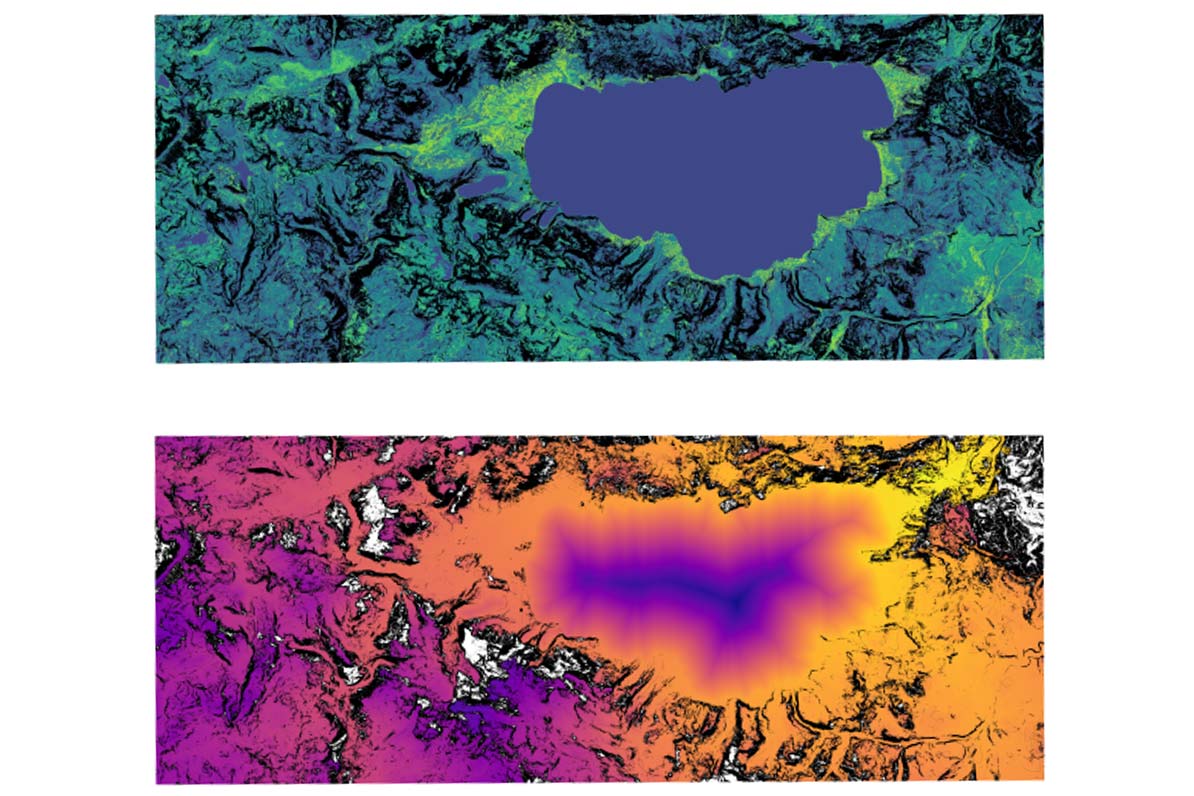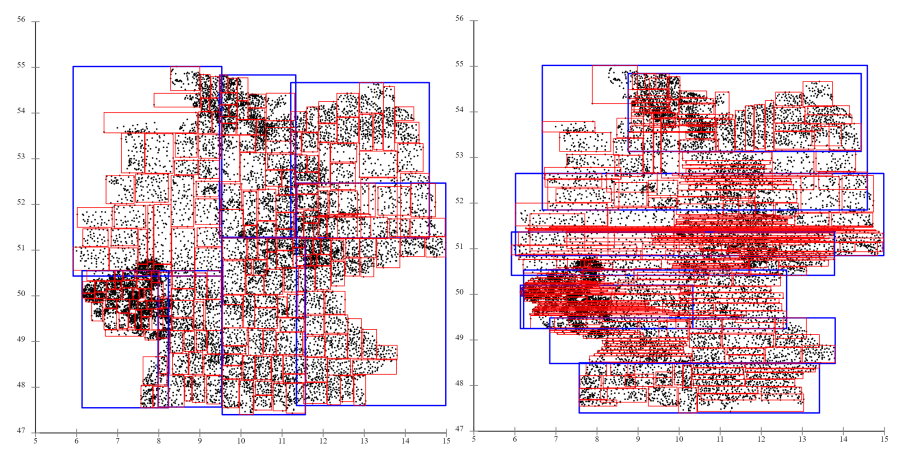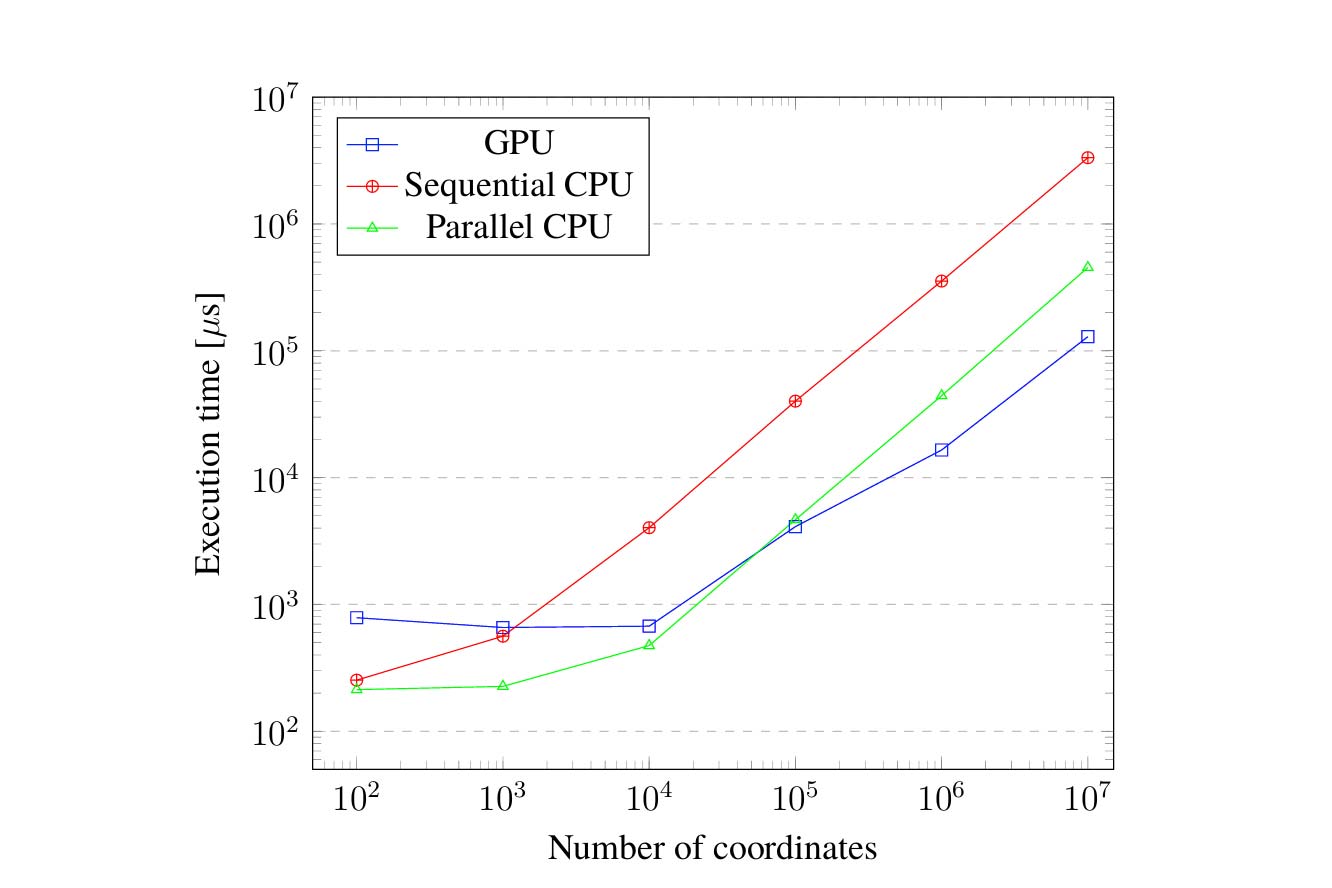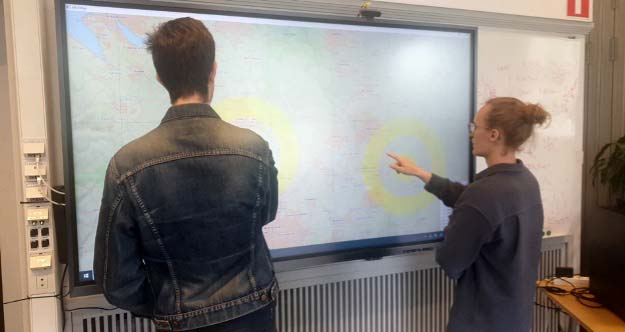Summary of results
The evaluated data structures are the simple quadtree, the loose quadtree, the loose-linear quadtree, and the R*-tree. A dynamic array is also implemented to represent a naïve approach. Where applicable, we augment the spatial indexes with two update techniques: bottom-up updating and update memo, to assess if these improve performance.
Evaluation is performed by a benchmark suite, where a scenario of objects sampled from different data distributions is used to quantify query and update performance of the spatial indexes.
The contribution of this thesis is twofold. First, we perform a thorough performance comparison for spatial indexes that support moving non-point geometry. To our knowledge, there exist no such survey at the time of writing. Secondly, we present novel query algorithms for the loose-linear quadtree which perform at least an order of magnitude better than other existing approaches.
This evaluation is divided into two steps. First, parameters specific to each data structure is chosen, with 10 million objects in the scenario. Then, we compare the data structures, the update techniques, and the memory usage of the selection. We find that the loose quadtree performs best for all measured scenarios in both updates and queries, while the R*-tree is worst, if not counting the query performance of the dynamic array. Bottom-up updating and update memo yielded unsatisfactory performance given the extra memory that is needed.





